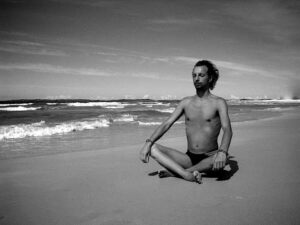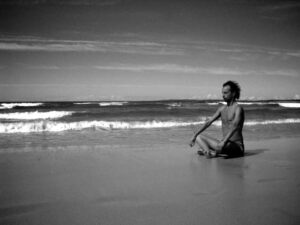Mindfulness and yoga practice Part 1
Yoga is big on meditation, and on bodywork. It wants us to be in our bodies, mindfully, in asana practice, during meditation, and after yoga class.
Body awareness imbues us with mindfulness, something that happens when we take what we learn from our practice on the mat, and apply it to our daily lives. A very useful skill to help us deal with
● anxiety
● fear
● emotional turmoil
● over thinking
● insomnia
● lack of focus
● too much detrimental focus or business
Listen to my mindfulness audio (3 minutes 25 sec)
Yoga shows us that the body and mind is interconnected, interdependent. Whatever happens in the one impact on the other. When the body-mind aspects function optimally, as a whole, we may be capable of, literally, anything. When there is disharmony or a disconnect between the two, we may become severely incapacitated or ill.
We usually step into yoga class with our ordinary bodies and ordinary thoughts, from the ordinary world, and then slowly dissolve into another aspect of reality, the yoga zone. Our focus shifts from the thinking mind, and emotions, away from the world of things, people and places, to engage in an extraordinary fullness of being. When we disengage from our surface personality and persona, and perceptions of the world of events, we feel our inner magnificence.
Sensations are felt, not judged or analysed
Yoga suggests we use this awareness of the breath and the body as the basis of meditation. Yoga helps us meditate, not by controlling the mind, rather by focusing our minds on other things than thoughts and emotions. With focus on the body, and the breath, for a sustained period of time, such as in a session, we may begin to feel much lighter after each yoga class or session.
Yoga is at once practical and it let’s us feel awesome
Such focus is useful develop asana and pranayama that actually helps us to develop good posture, and greater mobility, with flexible, strong body minds, and crucially, more comfortable to-be-in bodymind. Which is vital, as we live, and experience everything in this physical reality, in the bodies. When we apply these insights to our daily lives this awareness yoga becomes integrated with life “off the mat”.
This is how yoga helps us find peace and happiness inside ourselves, in harmony with our surroundings. Inner peace is exactly that, an inner awareness of tranquility connected to a focus at once soft, encompassing, and, in our center. Which is why a joyful and expansive experience of life really begins within ourselves, in our body-minds.
See you on the mat!
Johann,
10 June 2014.
Read part 2
 I took the photographs around 2005 for my book Essentials of Effective Yoga. I was evidently going for the vegetarian yogi look at that time but the images were actually meant to demonstrate the vast life force of unspoilt nature 🙂
I took the photographs around 2005 for my book Essentials of Effective Yoga. I was evidently going for the vegetarian yogi look at that time but the images were actually meant to demonstrate the vast life force of unspoilt nature 🙂
The basics of the Five Keys to Well-being. Essentials of Effective Yoga are pretty much the basics found in my classes. I have been teaching in much the same way over the years: there are the obvious physical aspects, also hidden, labeled esoteric. Mindfulness is an objective practice, meditation according to yoga contains this as basis, but in traditional yoga adds the element of self-realisation, and not in the Western competitive self-help sense. 
A combination of the two aspects completes the whole, i.e. the “holistic”. Mindfulness and hatha yoga is about not leaving anything out, including body and mind and environment, always starting with posture and breath, the inspiration and the technique of mindfulness. 
When investigating well-being practice starting with posture (or breath) it reveals that breath and posture is interdependent. With this in mind it also becomes obvious that mobility is improved in the process, and body-mind stress released, which makes effective meditation – and more effective mindfulness practice – possible. All the “keys” are all mixed up into a holistic, mindfulness lifestyle orientation.
I cannot place great enough emphasis on these basic essentials for any yoga beginners, or beginner mindfulness practitioners.
Wishing you many, rich blessings!
– Johann
llohe
